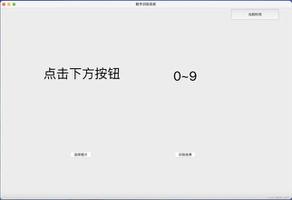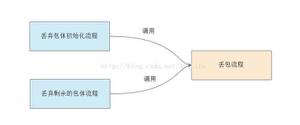Python 处理数据的实例详解
Python 处理数据的实例详解
最近用python(3.2的版本)写了根据特定规则,处理数据的一个小程序,用到了一些python常用的基础知识,在此总结一下:
1,python读文件
2,python写文件
3,python的流程控制
4,python的for循环
5,python的集合,或字符串里判断是否存在某个元素
6,python的逻辑或,逻辑与
7,python的正则过滤
8,python的字符串忽略空格,和以某个字符串开头和按某个字符拆分成list
python的打开文件的模式:
关于open 模式:
w 以写方式打开,
a 以追加模式打开 (从 EOF 开始, 必要时创建新文件)
r+ 以读写模式打开
w+ 以读写模式打开 (参见 w )
a+ 以读写模式打开 (参见 a )
rb 以二进制读模式打开
wb 以二进制写模式打开 (参见 w )
ab 以二进制追加模式打开 (参见 a )
rb+ 以二进制读写模式打开 (参见 r+ )
wb+ 以二进制读写模式打开 (参见 w+ )
ab+ 以二进制读写模式打开 (参见 a+ )
处理代码如下:
def showtxt(path,outpathname,detailpath):
greenpath=r"C:\\Users\\qindongliang\\Desktop\\tnstxt\\green.txt";
redpath=r"C:\\Users\\qindongliang\\Desktop\\tnstxt\\red.txt";
redset=listtxt(redpath)
greenset=listtxt(greenpath)
print("红色词数量: ",len(redset))
print("绿色词数量: ",len(greenset))
#符合1条件的内容写入
f1=open(r"C:\Users\qindongliang\Desktop\tnstxt\result\\"+detailpath+"\\1.txt",encoding="UTF-8",mode="a+")
#符合2条件的内容写入
f2=open(r"C:\Users\qindongliang\Desktop\tnstxt\result\\"+detailpath+"\\2.txt",encoding="UTF-8",mode="a+")
#符合3条件的内容写入
f3=open(r"C:\Users\qindongliang\Desktop\tnstxt\result\\"+detailpath+"\\3.txt",encoding="UTF-8",mode="a+")
#符合4条件的内容写入
f4=open(r"C:\Users\qindongliang\Desktop\tnstxt\result\\"+detailpath+"\\4.txt",encoding="UTF-8",mode="a+")
delcount=1;
f=open(path,encoding="UTF-8",mode="r+")
fnew=open(outpathname,encoding="UTF-8",mode="a+")
flog=open(outpathname+".log",encoding="UTF-8",mode="a+")
#count=1;
for line in f:
list=line.strip().split("\t")
line=line.strip()
catalogid=list[0]
score=list[1]
keyword=clear(list[4].strip())
if keyword in redset:
if catalogid.startswith("018022") or catalogid.startswith("018035") or catalogid.startswith("014023003") :
f1.write(line+"\n")#符合1条件写入
fnew.write(line+"\n")#符合1条件写入
else:
flog.write(line+" 不符合条件1 "+"\n")
delcount=delcount+1
if keyword in greenset:
if not (catalogid.startswith("018022") or catalogid.startswith("018035") or catalogid.startswith("014023003")) :
fnew.write(line+"\n")
else:
f2.write(line+"\n")
flog.write(line+" 不符合条件2"+"\n")
delcount=delcount+1
flist=formatStrList(keyword)
if "sexy" in flist or "sex" in flist:
if catalogid.startswith("018022") or catalogid.startswith("018035") or catalogid.startswith("014023003") :
f3.write(line+"\n")
fnew.write(line+"\n")
else:
flog.write(line+" 不符合条件3"+"\n")
delcount=delcount+1
#if (keyword.find("underwear")!=-1) & keyword.find("sexy")==-1 & keyword.find("sex")==-1:
if "underwear" in flist and "sexy" not in flist and "sex" not in flist:
if catalogid.startswith("014032") :
f4.write(line+"\n")
fnew.write(line+"\n")
else:
flog.write(line+" 不符合条件4"+"\n")
delcount=delcount+1
#print(list[0]," ",list[1]," ",list[4])
#print()
flog.write("删除总数目: "+str(delcount))
f.close()
f1.close()
f2.close()
f3.close()
f4.close()
fnew.close()
flog.close()
import re
def clear(str):
str=re.sub("[\"\"\'\'+]","",str)
return str
def formatStrList(keyword):
list=keyword.split(" ")
for item in list:
item.strip();
return list
def listtxt(path):
f=open(path,encoding="UTF-8")
s=set()
for line in f:
s.add(line.strip())
f.close()
return s
path1=r"C:\\Users\\qindongliang\\Desktop\\tnstxt\\highfrequency.txt"
pathout1=r"C:\\Users\\qindongliang\\Desktop\\tnstxt\\detail\\a_highfrequency.txt"
detail1path="highfrequency"
path2=r"C:\\Users\\qindongliang\\Desktop\\tnstxt\\highfrequency_d1.txt"
pathout2=r"C:\\Users\\qindongliang\\Desktop\\tnstxt\\detail\\b_highfrequency_d1.txt"
detail2path="highfrequency_d1"
#showtxt(path1,pathout1,detail1path)
showtxt(path2,pathout2,detail2path)
以上是 Python 处理数据的实例详解 的全部内容, 来源链接: utcz.com/z/329389.html





